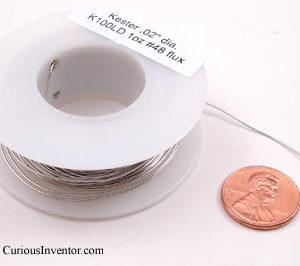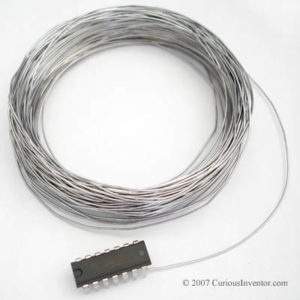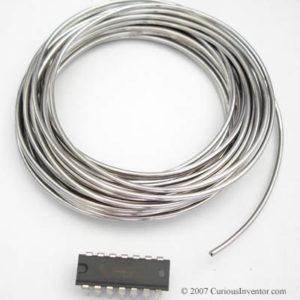Description
For a 7 min. how-to video with close-up, slow motion shots of proper technique, go here. The video and following guide also explain the importance of flux, how much wattage is needed, tip shape, and just how bad the fumes are. This is rosin-cored wire solder, with a “66” core of 48 flux–this means it’s 3.3% by weight flux. It can also be purchased in smaller percentages, and while in general it’s best to use the least amount of flux possible, for hobby and non-critical applications, ease of soldering is more important (see below for corrosion risk). This flux is classified as ROM1, which means Rosin based, medium activity, and halides added. Lead-free solder considerations: While recommended iron temperatures for regular lead-based solder fall between 600-700 degree F, lead free solder may require iron temperature between 700 and 800 degrees F. As always, the less temperature you can get away with, the better–soldering with lead-free solder may take a little bit more time, patience is better than higher temperatures. The flux is slightly more aggressive and strong smelling, but Kester 48 is one of the better fluxes in terms of lead-free order. Lead-free joints will appear dull–this does not mean the joint is cold or bad. Like lead-based solder, the best indication of a bad joint is lack of wetting. Look for any sign that the solder didn’t cling to the joint. Amount: How far will an ounce go? In a rough experiment, we generously soldered 16, 16-pin chips, tinning the tip in between each one. Based on that usage, 1 oz would complete over 3000 joints. To our knowledge, CuriousInventor.com is the only place to purchase Kester solder in quantities less than a lb. The data sheet can be found here. Why buy this over RadioShack solder? First, we match the price. Second, Kester is the Rolls-Royce of solder, and has decades of industrial use attesting to the quality of the solder and the flux contained in the wire. Now, we grew up using RadioShack solder for hundreds of projects, so we certainly aren’t going to claim it doesn’t work. However, like many things in RadioShack, the specs are unknown–just how active is the flux and how likely is it that the residues will corrode a circuit board? The quality of solder is mostly based on its flux, and whether or not there are any air gaps in the wire. Kester’s manufacturing process is supposedly superior to others when it comes to avoiding gaps in small diameter wire. Kester 48 flux strikes a difficult balance between a very active flux (one that cleans oxides effectively and helps the solder to wick quickly, even on difficult surfaces like nickel), and one that won’t corrode the board later. No-clean solder / flux: For non-critical applications, we recommend “standard” rosin flux that has been activated, but this recommendation only goes out to Kester brand 44 and 48 fluxes. Activated rosin flux makes soldering easier and faster, especially on oxidized or other difficult surfaces. And, the risk that the residues will cause corrosion is debatable at best. If you’re building a project that will operate in humid, salty ocean air, consider cleaning the flux or using a no-clean type. But otherwise, it may not even be necessary to clean. From the Kester 48 spec sheet: “Cleaning: The 48 residues are non-conductive, non-corrosive and do not require removal in most applications. The flux residues are comparable to a conventional RA.”





Reviews
There are no reviews yet.